Boomers, Millennials and Beyond: Radiology's Changing Generational Landscape
Being adaptable and capitalizing on each generation’s strengths benefits patients, radiologists and institutions alike
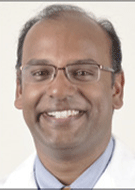
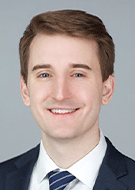
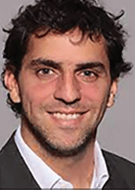
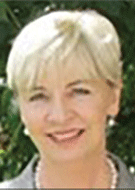
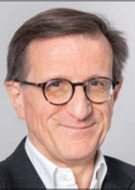
This year is the first in which five different generations are working in radiology. Millennials (those born between approximately 1981 and 2000) are now working with traditionalists (born approximately 1925-1945),baby boomers (born approximately 1946-1964), and Generation Xers (born approximately 1965-1980). The youngest adult generation is Generation Z (born approximately 1996 to 2012.)
As of 2016, “Millennials” (also known as Generation Y) became the largest group of people in the U.S. radiology workforce, according to Arun Krishnaraj, MD, MPH, professor of radiology and medical imaging at the University of Virginia Health in Charlottesville.
Dr. Krishnaraj, a Gen Xer/millennial, notes that stereotypes about each generation—such as baby boomers being self-sufficient workaholics, Gen Xers being logical problem solvers, and millennials being confident and likely to question authority—represent vast oversimplifications.
Dr. Krishnaraj, coauthor of a RadioGraphics study about generational differences among radiologists, notes that the influx of millennials may signal a change in the dynamics of radiology departments and private practices. In his view, this major demographic shift is likely to have a profound effect on workplace culture, recruitment efforts and trainee education.
Digital Natives in the Workforce
Eric Cyphers, a fourth-year medical student at the Philadelphia College of Osteopathic Medicine, is part of Gen Z, a generation associated with its familiarity with technology. Cyphers coauthored a recent American Journal of Roentgenology article that explores the potential impact of Gen Z joining the ranks of radiology residents.
“I do see a relationship between my generation and the way I approach work,” Cyphers said. “I hope I am ambitious about and comfortable with technology, traits often attributed to Gen Z; however, I find myself with qualities more stereotypically attributed to other generations, as well. My generation has a lot to learn from the previous generations, so I hope to take on qualities often associated with other generations, such as being self-sufficient and hardworking, which are qualities commonly attributed to baby boomers, and to acquire the problem-solving skills and resourcefulness that Gen Xers are more commonly known for.”
Ignacio Rossi, MD, chair of the RSNA Regional Committee on Latin America, is a radiologist at Centro Rossi in Buenos Aires, Argentina, where his father and brother also work. Born in 1984, Dr. Rossi is a considered a millennial.
“I think workplace culture has evolved over time, primarily due to advances in technology,” he said. “For example, before the internet, PACS (picture archiving and communications systems) and smart phones, my father used to print the images used in reports, which today seems outdated.”
Like Cyphers, Dr. Rossi identifies with some of the positive traits typically attributed to his generation, but also values the experience of older generations.
“I see a relationship in some of the characteristics often associated with my generation, like being curious and confident,” he said. “But at the same time, since all of my mentors were and are from other generations, I have acquired a lot of the characteristics for which they are known for, too.”
Dr. Rossi appreciates the skills of late and mid-level career radiologists as well as the skills of young radiologists.
“I have always tried to be very respectful with professionals who have more experience than I do,” he said. “Today, I’m learning from both older and newer generations and trying to acquire new ways of approaching the same problems or situations."
“I see a relationship in some of the characteristics often associated with my generation, like being curious and confident. But at the same time, since all of my mentors were and are from other generations, I have acquired a lot of the characteristics for which they are known for, too.”
IGNACIO ROSSI, MD
Work Style Flexibility
Another area of potential difference is the preference (or lack thereof) for learning and working remotely.
“Those of us who have grown up entirely within the digital age may approach problems differently from those for whom digitalization was not initially as deeply entrenched in their lives and careers,” Dr. Krishnaraj said. “Leveraging technology to make communication easier and allow for more work to be done remotely, for example, may favor those who are most naturally comfortable with the contemporary technology landscape.”
Many things other than age, of course, can affect one’s work style preference, Dr. Rossi noted.
“I think it also depends on other factors, such as one’s personal situation: family, kids, distance they live from work, what tools they have at home,” he said. “A hybrid model is optimal so that communication is not lost between professionals.” Lizbeth Kenny, MD, FRANZCR, is a professor and radiation oncologist at the Royal Brisbane and Women’s Hospital, Brisbane Australia and the School of Medicine, University of Queensland.
A baby boomer, Dr. Kenny agrees about the importance of having flexibility in the workplace to help acquire and retain talented radiologists and radiation oncologists.
“We have more trainees having children during training now compared to 30 years ago,” she said. “I take my hat off to them; we try to support them in this choice.”
The trainees at Dr. Kenny’s institution are generally older now when entering the training program than in years past, and nearly half are women.
“Our trainees cover one another’s commitments when there is a requirement to do so, such as when someone has to race off to pick up children, or have exam/ study commitments,” she said. “The ability of our team members to all pitch in and provide support is just fabulous.”
Several of the radiologists mentioned that the empowerment to ask for assistance from your colleagues when you needed to leave early or had a personal emergency was not a commonly accepted practice.
Professor Jean-Pierre Tasu, MD, PhD, a radiologist at the University and Hospital of Poitiers in Poitiers, France, and vice president of the French Society of Radiology is on the cusp between a baby boomer and Gen X. As chair of the RSNA Committee on International Radiology Education, he is particularly aware of the current state of radiology education and how much it has changed.
“For the new generation, meeting with a teacher in person is less important than it was before because of the internet,” he said.
Dr. Tasu’s institution accommodates younger generations’ desire for online learning. One such course on abdominal imaging moved from an in-person to an online course, which resulted in increased registrations and positive feedback from those who took the course.
Dr. Rossi emphasized that radiologists of all ages should be respectful of one another and adjust to the ever changing nature of the specialty.
“Having good communication and tolerance are key for creating better teamwork,” he said.
For More Information
Access the RadioGraphics study, "Navigating Generational Differences in Radiology."
Access the American Journal of Roentgenology at ajronline.org.